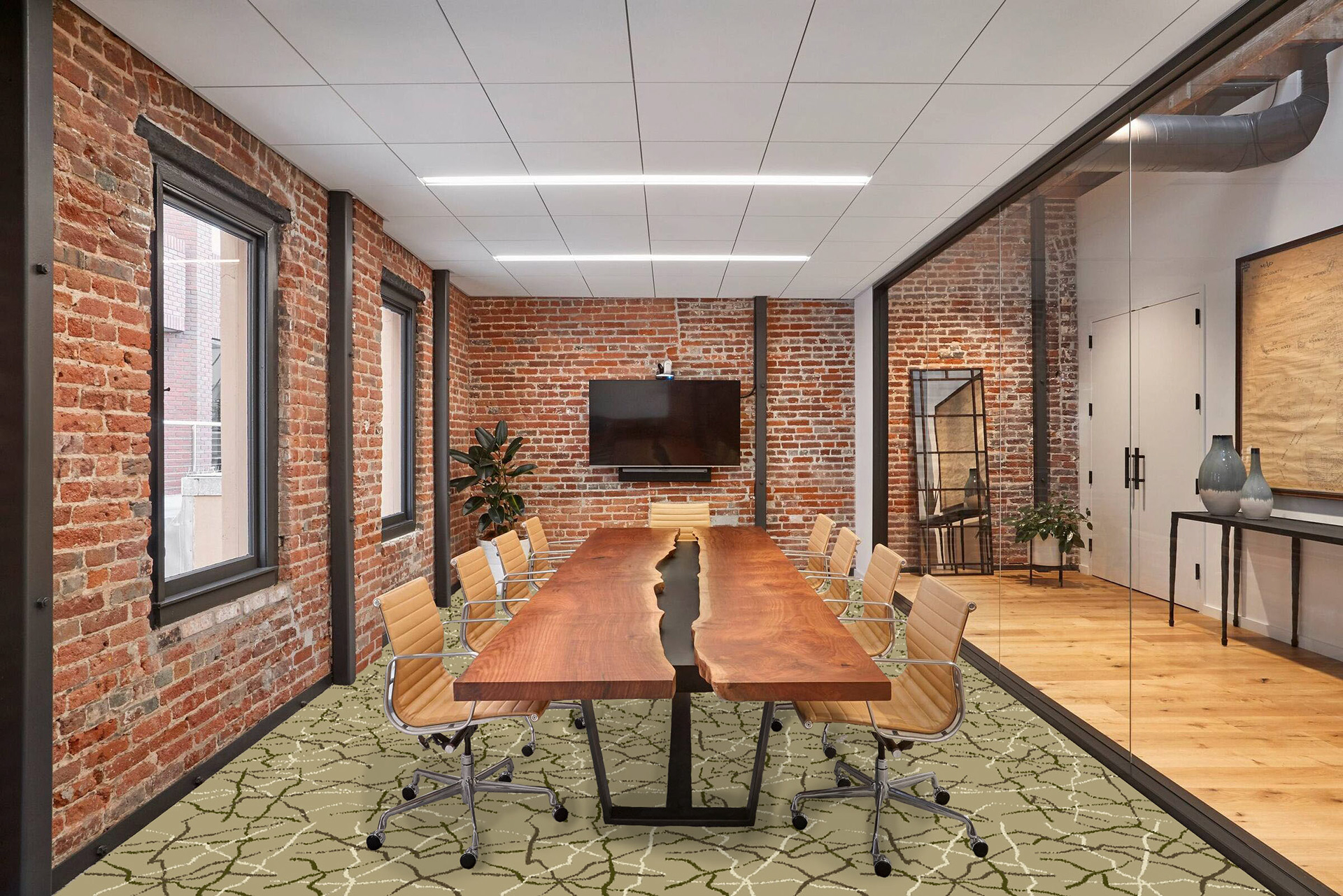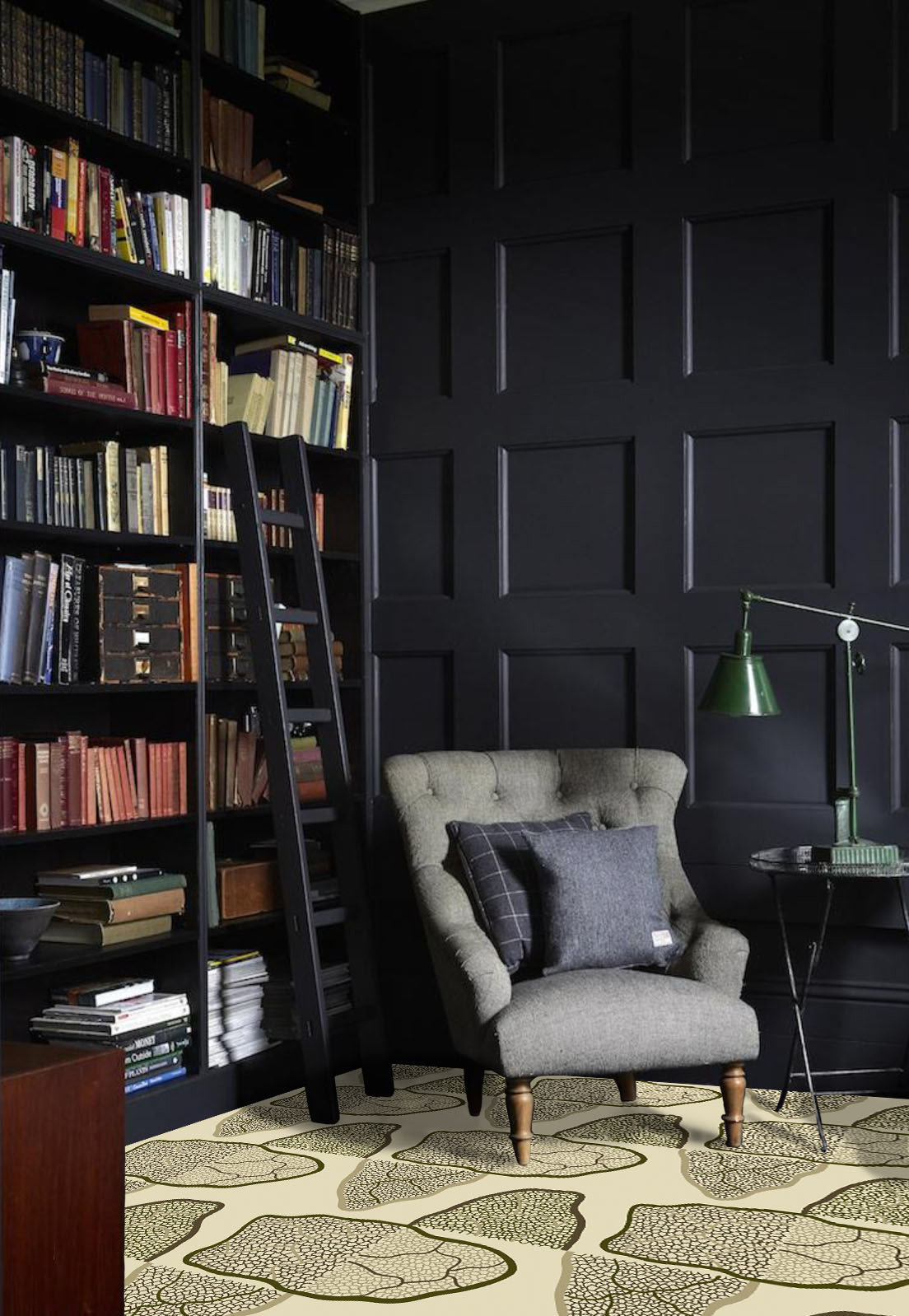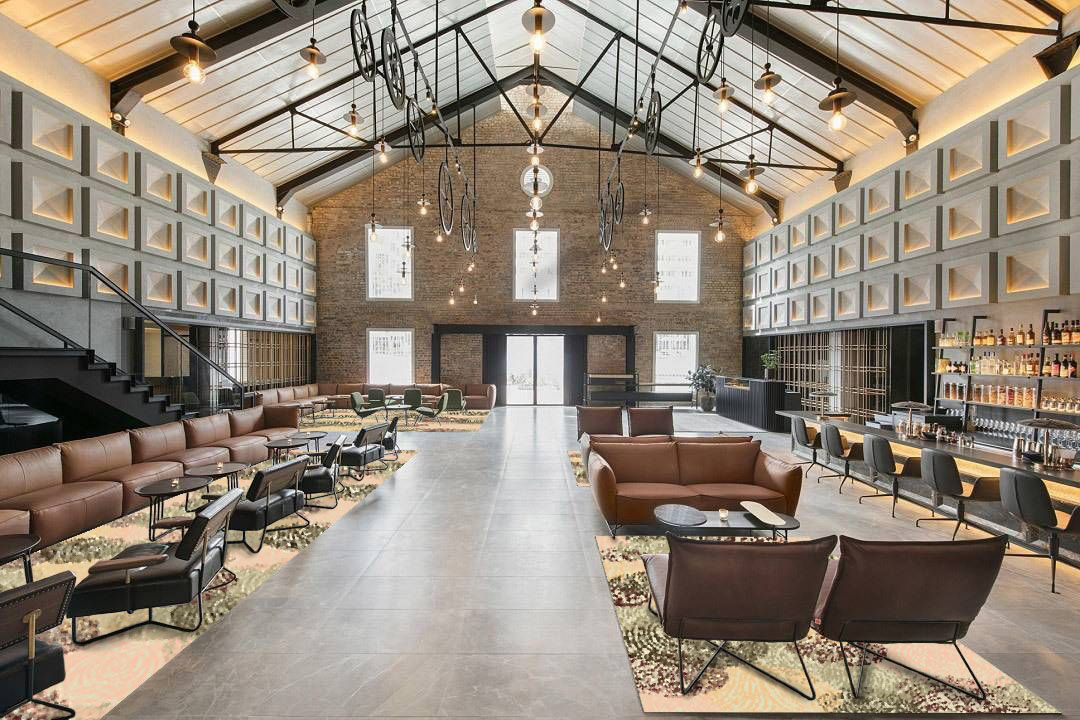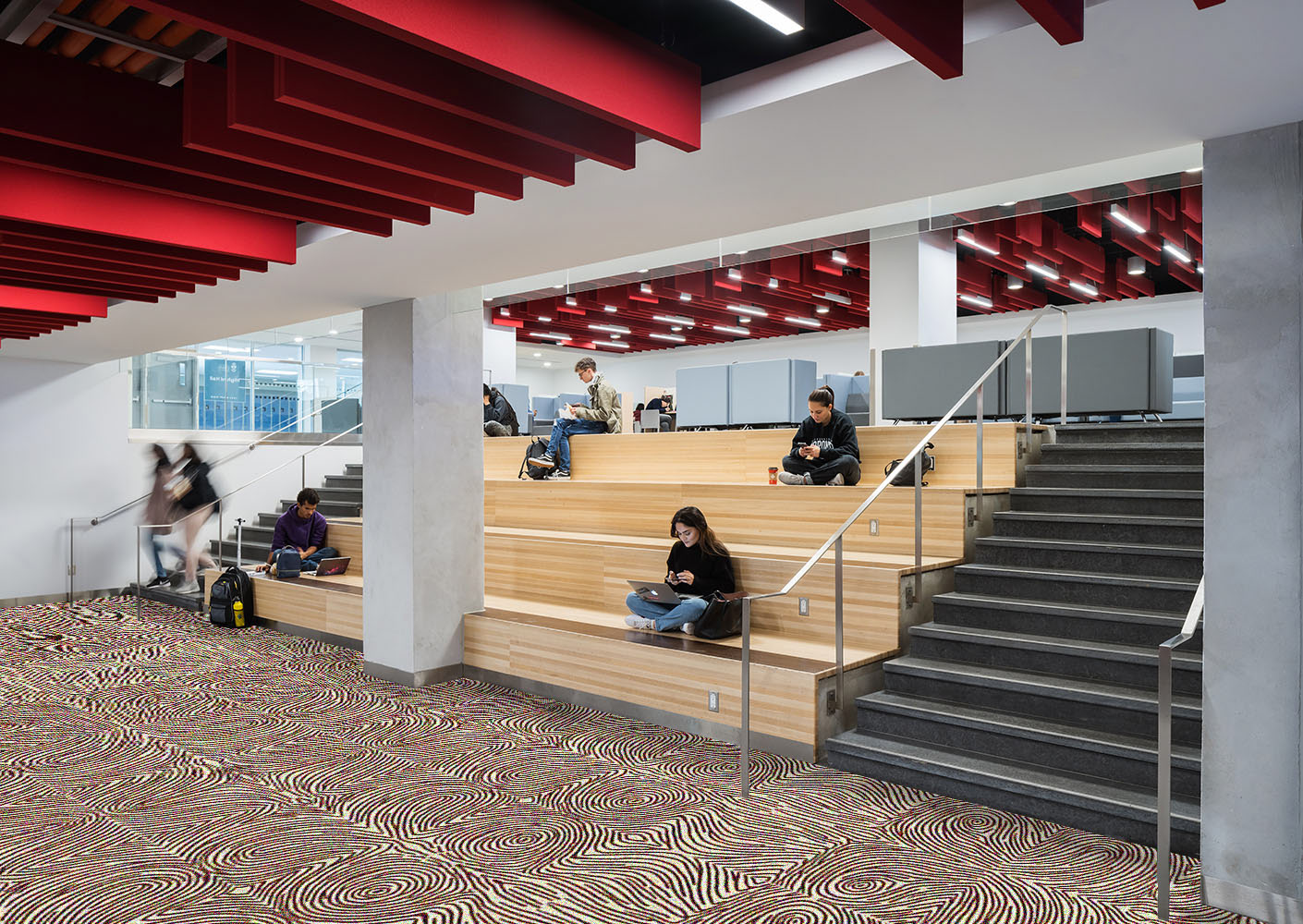Trend Forecast:
The Future is preserved
Project Brief:
The purpose of this project was to propose what we believe will be a future trend and will be a factor in the future of design. Based on research that we were to do about the current and future driving forces of design and through our own lens of beliefs, morals, experiences, interests, etc. we were to create the trend forecast. This project included our research, a visual positioning board, and a 20-second video telling the story of the trend.
research:
Concept Statement: Preservation is to retain, maintain, and/or keep something alive in its current or original state. When preserving something, the essence of it is kept, but it is modernized so that it can be used and relevant to today’s world and for its future purpose. Preservation gives us a better understanding of our past and where we came from, which allows us to see successes and mistakes of the past that can guide us in our future. Various factors of our current world are going to affect the greater amount of preservation that we will see in the future. One major factor that will contribute to the rise in preservation is the current, rapidly-growing topic of the conservation of our Earth, along with green design and the use of clean products. For example, using already-existing buildings is an environmentally friendly way of constructing “new” spaces. Also, there is more limited space left to construct new buildings, which will push even more toward reusing old buildings. Another topic that is currently gaining interest is having pride in oneself and our past or our heritage. This will lead to various cultures and languages being preserved that are currently being forgotten.
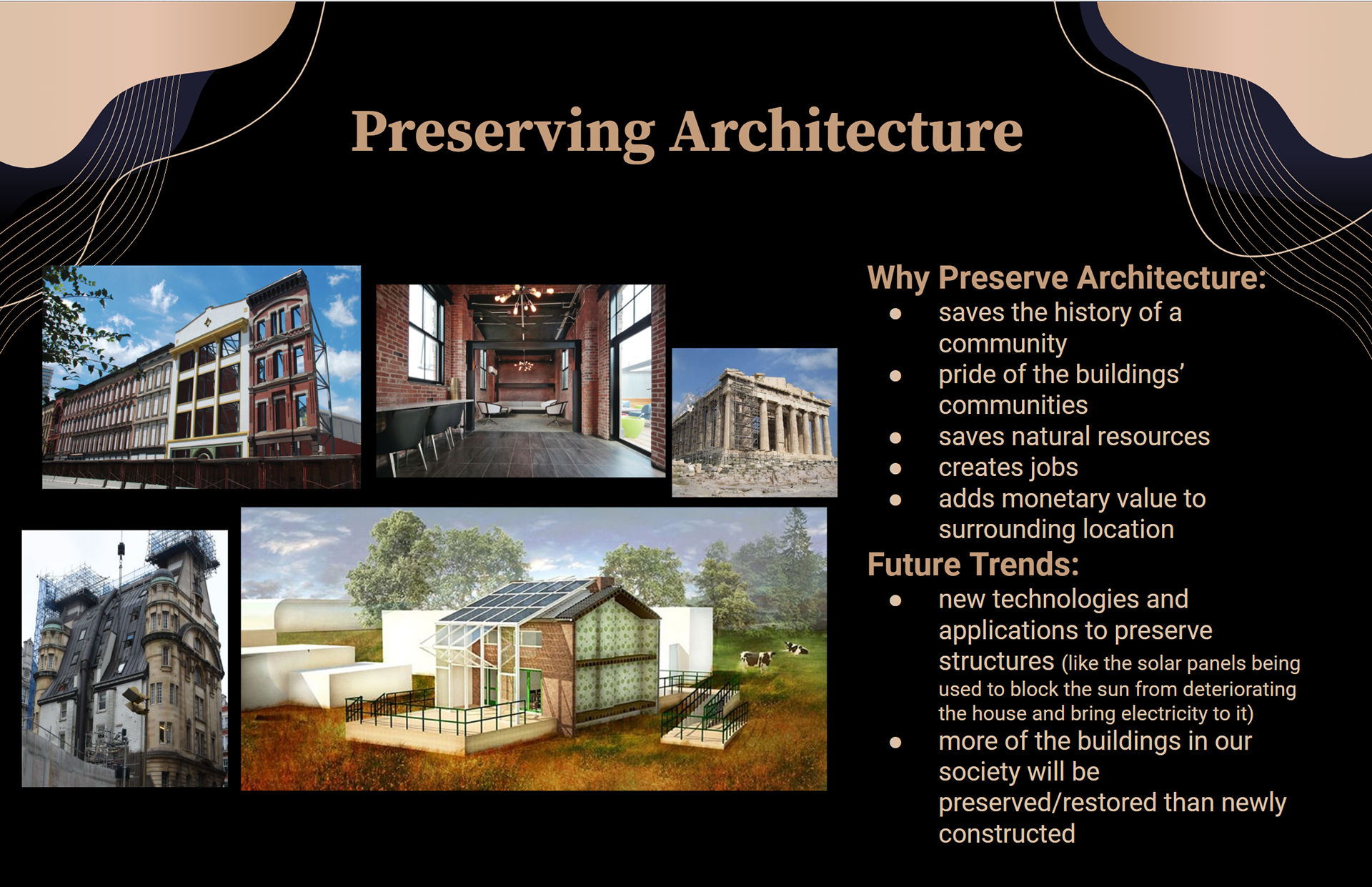
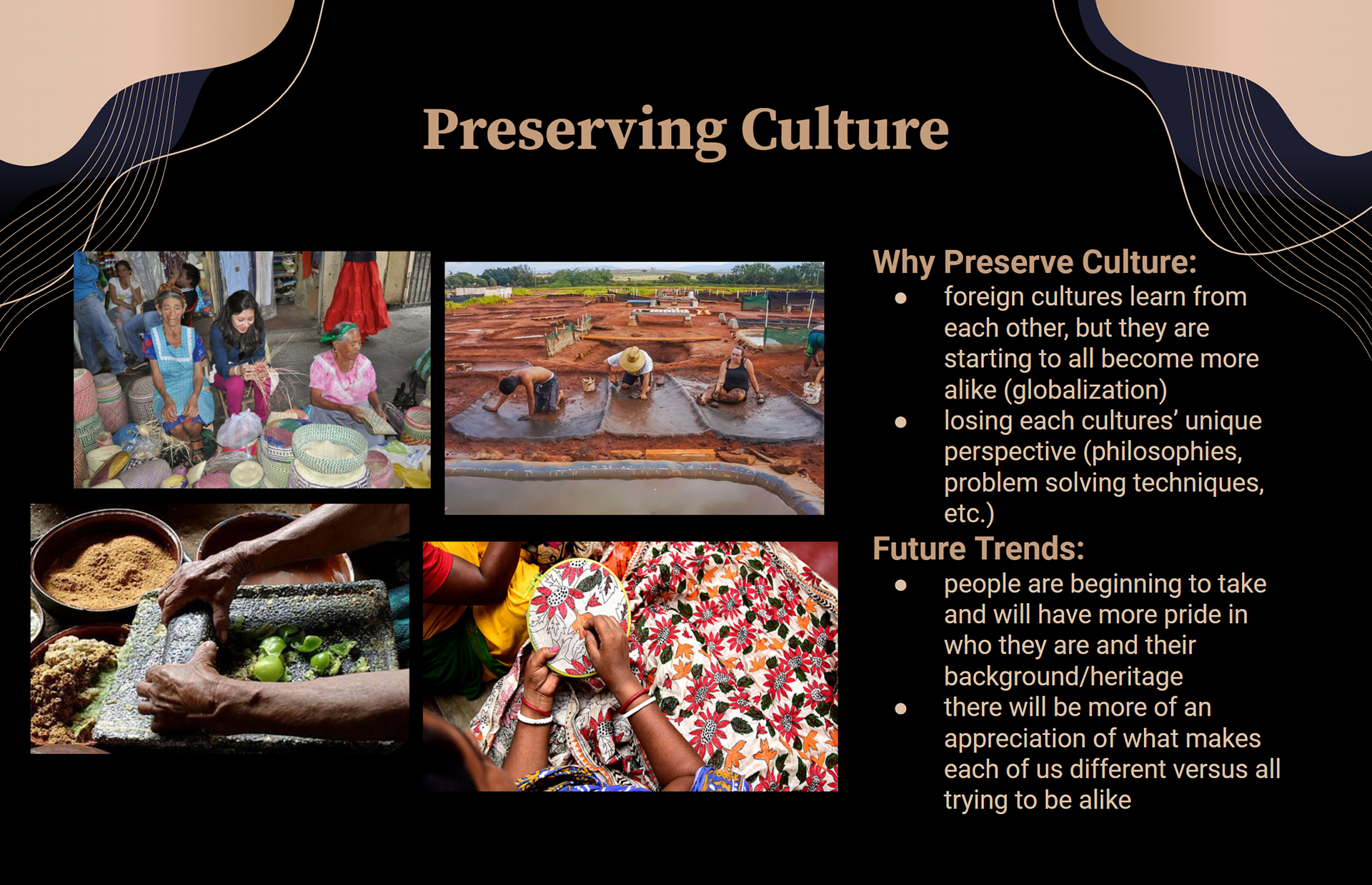
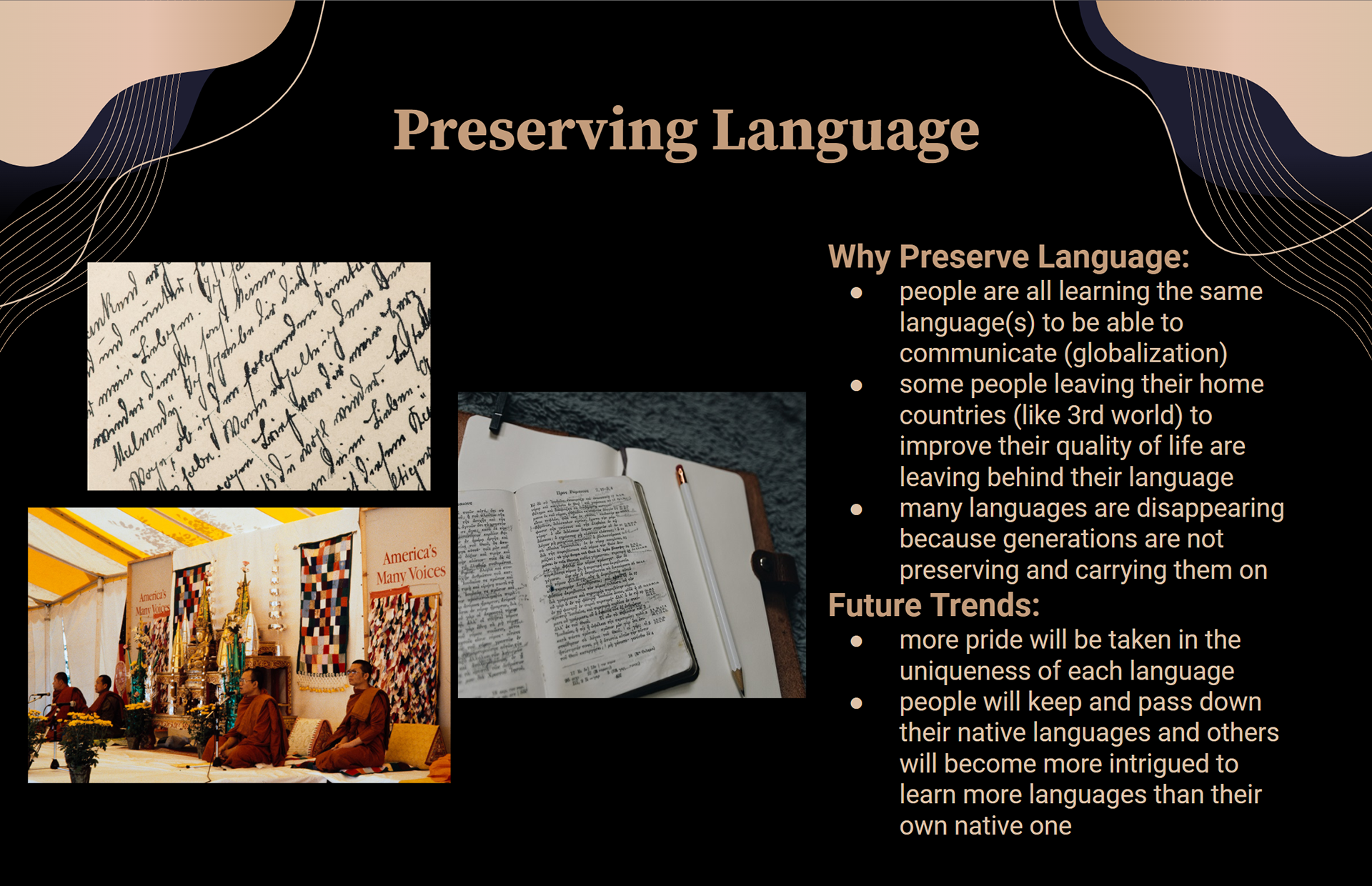
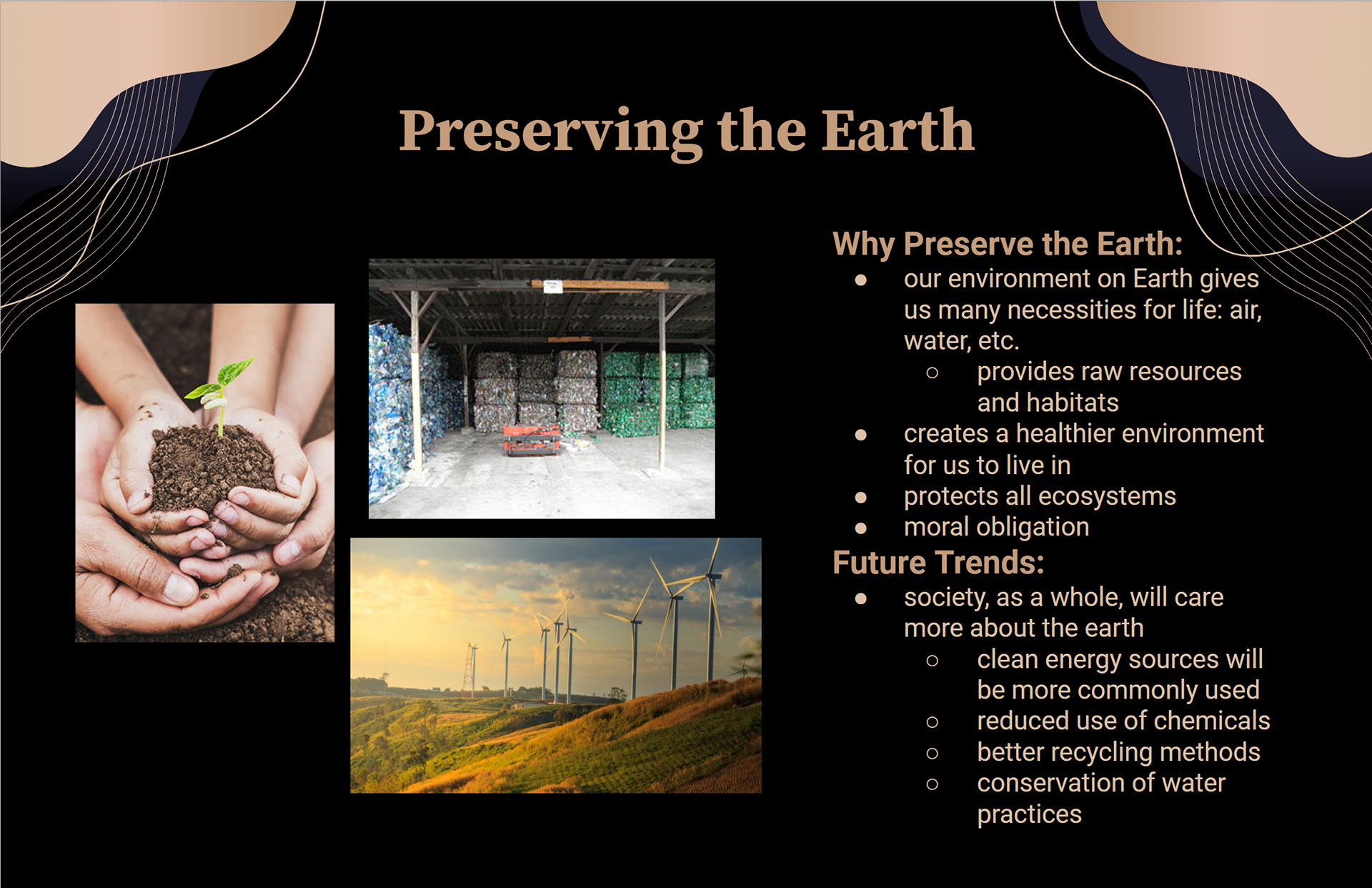
Our future will encompass preservation by REUSING things from the past and MAINTAINING matters from our current world in order to CONSERVE the Earth, have PRIDE in who we are and where we come from, and KEEPING ALIVE our history, beliefs, and ethics. In my research, I focused on the preservation of architecture, culture, language, and the earth.
Innovative Carpet Design:
preserving our essence
Project Brief:
We were tasked with creating a new carpet design for Mohawk to be implemented into commercial spaces. Our design was to positively impact the human user experience and the natural environment. While translating our design forecast from the previous part of this project, our carpet design must also reduce, reuse, or recycle waste to create a more sustainable future. Our carpet design could be a carpet tile, a rug, and/or broadloom, as well as be a stand alone design or a full collection.
Process:
Concept Statement: Trend Forecast to Carpet Design: In the future, preservation will become a larger trend in our societies, particularly the preservation of architecture, culture, language, and the Earth. Open space for new buildings to be constructed is becoming slim, so the preservation of architecture is becoming increasingly important. There is a growing pride in the background of people and their past and cultures need to be preserved, as they each provide a unique perspective to current topics. Globalization is affecting the remaining languages around the world. The preservation of our natural environment is becoming a very prominent topic, as well, and will continue to grow in importance.
This carpet tile and rug collection, partnered with Mohawk Group, brings emphasis to the growing importance of preservation. The carpets in this collection are directed towards the use of being put into buildings that have been restored, however, the market segment is broader, including hospitality, workplace, retail, etc. The PLACE line is made up of patterns from abstracted forms of architectural structures, arches and columns. The PEOPLE line includes forms that are inspired by the six main fingerprint patterns, as everyone has unique fingerprints that are individual to them, even though all people have them, just like all cultures have their own unique qualities. The PLANET line is created based on the veining structures leaf-inspired forms, as trees are one of the many elements of nature that need to be preserved. The topic of language is worked throughout each of the three lines through the use of the language of design, the design elements and principles. The overall color scheme of this collection was based on a historic color palette and the specific colors from this palette were chosen based on color psychology, yellow for direction, innovation, and optimism, red for a call to action, and green to promote harmony. Various logics of materials are also evident within this collection, such as the functionality of the carpet, the philosophy of the essence of recycled carpet staying the same as it returns to new carpet, and the aesthetic of this collection.
Concept Statement: Sustainable Strategy for Global Waste Mitigation: This carpet and rug collection is sustainable, as it is made out of recycled carpet. It is made out of carpet tiles that are not able to be reused as they are, but they are recycled by the nylon fibers being separated from the backing. These fibers are then recycled into yarn that will be used to make the new carpet of this collection. According to Waste Zero, every year there is more than 16 million tons of textile waste generated just in the United States, most of which could have been recycled, but was not. About 85% of textile waste ends up being thrown away in the trash, instead of being recycled. These include various types of textiles, one being carpets. Mohawk is currently very sustainable in their products, having carpets that are already composed of up to 100% recycled products through Mohawk Continuum. However, this collection would be adding another sustainable manufacturing method, so that the company could still be helping in the recycling of plastic water bottles with Continuum, along with recycling old carpet to keep the essence of it the same.
final designs:
Preserving our Essence Collection: Includes 3 lines: PLACE, PEOPLE, and PLANET, each of which has 2 different pattern ways.
Construction Specifications:

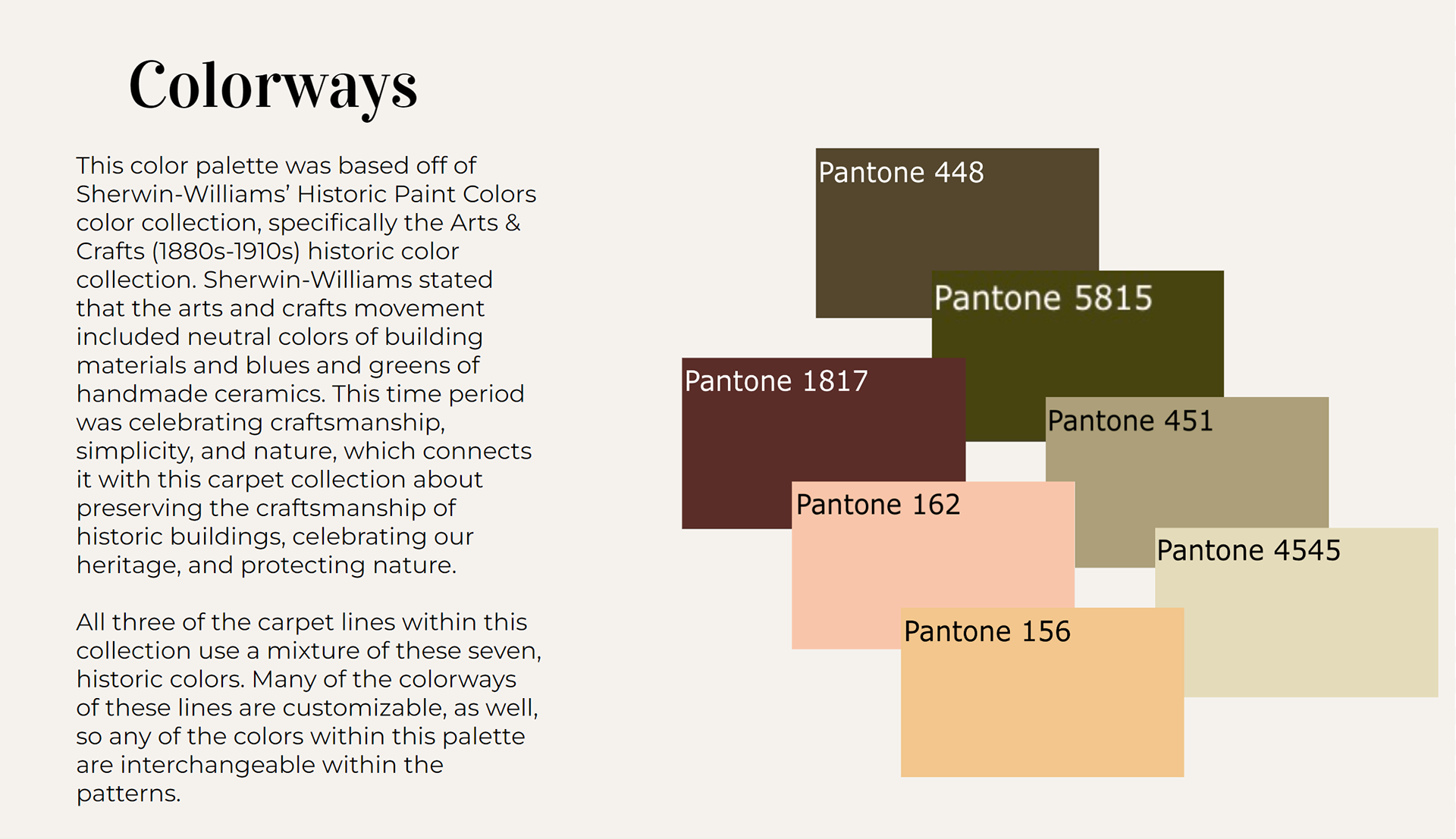
Installation Examples:
